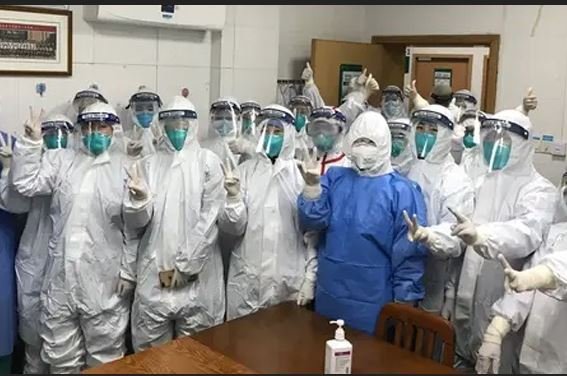By Lawrence Sellin and Ji Yuan
The Secretive Career of a Chinese Science Mole at the Highest Level of the National Institutes of Health.
U.S. medical research laboratories are little more than Chinese colonies, extensions of China’s fused military-civilian research programs and fully funded by the U.S. taxpayer.
Chinese scientists working in the United States, many of whom have become U.S. citizens, have remained loyal to the Chinese Communist Party and are actively collaborating with their counterparts in China, including the People’s Liberation Army.
Between 2009 and 2020, Dr. Xiaoyuan (Shawn) Chen worked at the National Institutes of Health (NIH), eventually rising to become Chief of the Laboratory of Molecular Imaging and Nanomedicine (LOMIN) at the National Institute of Biomedical Imaging and Bioengineering (NIBIB).
During the entire period Xiaoyuan Chen was in the United States, while he was being paid a high salary by the U.S. government and received in excess of $38 million in NIH research funding, Xiaoyuan Chen maintained a secretive parallel career working with China’s People’s Liberation Army and establishing a mirror-image of his NIH research activities in Xiamen University in China.
In violation of U.S. government protocol if not U.S. law, Xiaoyuan Chen failed to report his over 10-year extensive research collaboration with China’s People’s Liberation Army.
Below are a few examples of the many scientific research articles published by Xiaoyuan Chen together with China’s People’s Liberation Army while he was employed by NIH:
The 2011 article “PET of Insulinoma using 18F-FBEM-EM3106B, a New GLP-1 Analog” co-authored by Xiaoyuan Chen and the People’s Liberation Army’s Fourth Military Medical University in Xi’an, China, research supported by the Intramural Research Program (IRP) of the National Institute of Biomedical Imaging and Bioengineering (NIBIB), National Institutes of Health.
The 2013 article “Noninvasive Visualization of MicroRNA-16 in the Chemoresistance of Gastric Cancer Using a Dual Reporter Gene Imaging System” co-authored by Xiaoyuan Chen and the People’s Liberation Army’s Fourth Military Medical University in Xi’an, China, does not appear in the NIH publication record for Xiaoyuan Chen.
The 2016 article “Multimodal-Imaging-Guided Cancer Phototherapy by Versatile Biomimetic Theranostics with UV and γ-Irradiation Protection” co-authored by Xiaoyuan Chen and the People’s Liberation Army’s Fourth Military Medical University in Xi’an, China, does not appear in the NIH publication record for Xiaoyuan Chen even though the article states that the research was supported by the Intramural Research Program (IRP) of the National Institute of Biomedical Imaging and Bioengineering (NIBIB), National Institutes of Health.
The 2018 article “Hierarchical Tumor Microenvironment-Responsive Nanomedicine for Programmed Delivery of Chemotherapeutics” co-authored by Xiaoyuan Chen and the People’s Liberation Army’s Fourth Military Medical University in Xi’an, China, does not appear in the NIH publication record for Xiaoyuan Chen even though the article states that the research was supported by the Intramural Research Program (IRP) of the National Institute of Biomedical Imaging and Bioengineering (NIBIB), National Institutes of Health.
The 2020 article “Ultrasmall copper-based nanoparticles for reactive oxygen species scavenging and alleviation of inflammation related diseases” co-authored by Xiaoyuan Chen and the People’s Liberation Army’s Third Military Medical University in Chongqing, China, does not appear in the NIH publication record for Xiaoyuan Chen even though the article states that the research was supported by the Intramural Research Program, National Institute of Biomedical Imaging and Bioengineering, National Institutes of Health.
In addition to the secretive career collaborating with China’s People’s Liberation Army while employed by the National Institutes of Health, Xiaoyuan Chen, in 2012, created a center at China’s Xiamen University, which mirrored the work being conducted in his U.S. taxpayer-funded NIH laboratory.
While Xiaoyuan Chen was fully employed by the National Institutes of Health, the 2018 article “Novel Intrapolymerization Doped Manganese-Eumelanin Coordination Nanocomposites with Ultrahigh Relaxivity and Their Application in Tumor Theranostics” was co-authored by Xiaoyuan Chen and scientists from the People’s Liberation Army’s Third Military Medical University in Chongqing and from Xiamen University.
In addition to collaborating with scientists from the People’s Liberation Army, Xiaoyuan Chen also trained numerous Chinese scientists in his laboratory, including those from China’s military, like Hao Hu from the Fourth Military Medical University.
Xiaoyuan Chen is far from an isolated case.
U.S. medical research programs are massively infiltrated by Chinese Communist Party and People’s Liberation Army scientists, who immigrated to the United States over the last 30 years and now are in positions of responsibility in every major American university and U.S. government laboratories, including those of the Department of Defense.
Lawrence Sellin, Ph.D. is retired U.S. Army Reserve colonel and a veteran of Afghanistan and Iraq. He had a civilian career in international business and medical research. His email address is [email protected]. Ji Yuan is a former Certified Public Accountant licensed by the People’s Republic of China, who audited financial statements of Chinese Communist enterprises for multiple years.





